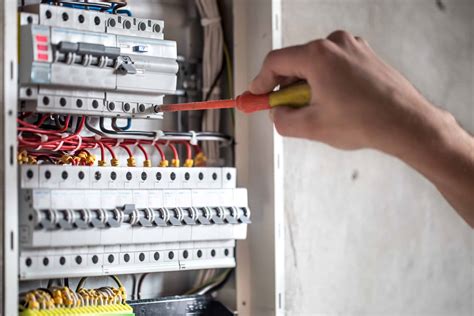Insights & Expertise
From the Field

In modern electrical safety, few devices are as important — or as misunderstood — as the Residual Current Device (RCD), more commonly known as a safety switch. These small devices sit inside your switchboard, constantly monitoring the flow of electricity. In the split second that something goes wrong — a fault in wiring, a damaged appliance, or a person receiving an electric shock — the RCD cuts the power instantly.
It’s no exaggeration to say that RCDs save lives. In Queensland, their installation is no longer optional.
What Exactly Does an RCD Do?
Electricity normally flows in a balanced loop through your wiring — out via the active wire and back through the neutral. An RCD monitors this balance. If it detects even the smallest difference — as little as 30 milliamps — it means some current is “leaking” elsewhere. That leak could be through a faulty appliance, or through a person. In response, the RCD trips in less than 0.03 seconds, cutting the circuit before the current can cause serious harm or death. Circuit breakers and fuses protect equipment. RCDs protect people.
When Did They Become Compulsory?
Queensland has introduced RCD obligations in stages:
- 1992 – Safety switches became compulsory on all power circuits in new domestic installations.
- 2000 – The requirement was expanded to include both power and lighting circuits.
- Property transfers and rentals – Buyers and landlords must install missing RCDs within 90 days of taking ownership or starting a new tenancy. Sellers must also declare whether safety switches are in place.
These requirements mean that in practice, any older board without RCDs will need upgrading when ownership, tenancy, or renovations occur.
What About Commercial and Industrial Premises?
In workplaces, the law also recognises the critical role of RCDs. General-purpose socket outlets up to 20 amps almost always require RCD protection. High-risk environments such as construction sites and manufacturing facilities must retrofit RCDs if they’re missing.
Even in low-risk office environments, businesses are required to either install RCDs or operate a rigorous test-and-tag regime. For PCBUs (Persons Conducting a Business or Undertaking), the message is clear: providing an electrically safe environment is a legal duty.
Why Every Property Needs RCDs
The cost of installing safety switches is small compared to the risks of going without. Without RCD protection:
- Electric shock risk skyrockets – old boards without safety switches offer no protection if a person contacts live current.
- Insurers may challenge claims – many insurers expect compliant RCD coverage as a minimum.
- Future upgrades become harder – solar, EV chargers, and batteries all require boards with modern protection.
On the other hand, with RCDs in place, you have peace of mind that your system is compliant, safer, and ready for the future.
The Bottom Line
RCDs are not an optional extra. They are a legal requirement, an insurance expectation, and above all, a proven life-saving device. If your switchboard doesn’t have them on every circuit, it’s not just non-compliant — it’s unsafe.
Upgrading now ensures you’re protected, your property is compliant, and your switchboard is prepared for whatever electrical demands the future brings.
.svg)